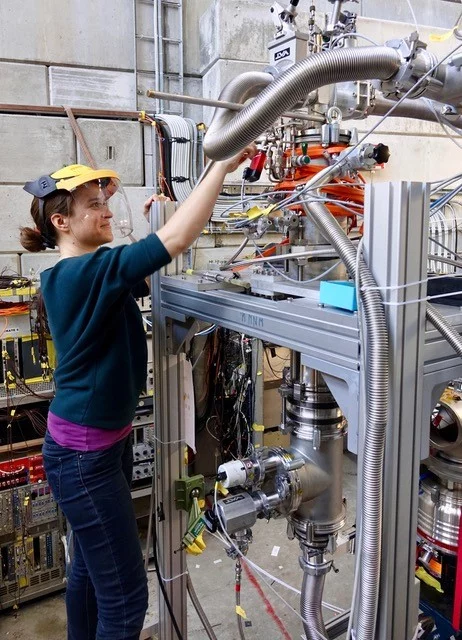In her project "Cold Muonium Beam for Atomic Physics and Antimatter Gravity", Anna Sótér plans to develop a novel source of muonium (Mu) — which consist of a positive muon and an electron — with a small emittance and high rate. The goal is to then study these exotic atoms in interferometry experiments, enabling novel investigations of antimatter gravity and hence of the weak equivalence principle, as well as in high-precision spectroscopic studies.
The key idea underlying the proposed Mu source is that a thin layer of superfluid helium should serve as an efficient converter of muons to vacuum muoniums. As Mu has a dominant antiparticle content, these atoms provide a unique platform for testing the gravitational interaction of antimatter. To do so, Sótér will develop an atom interferometer and detection system, involving nano-fabricated gratings, in which the Mu beam can be studied.
The new Mu source can be harnessed as well to improve spectroscopy of the 1S-2S transition in Mu by several orders of magnitude. Furthermore, the precise characterization of the Mu beam leaving the superfluid-helium surface under various experimental conditions can be used to deduce various aspects related to the behaviour of impurities in the superfluid medium.
The SNSF Ambizione fellowship of Anna Sótér started at the beginning of this year. Hosted by the group of Prof. Klaus Kirch, she will develop technology in his labs at ETH Zurich and use the unique capabilities for performing muon experiments at PSI.


